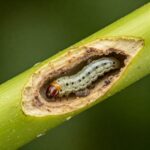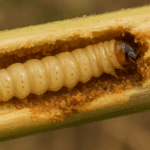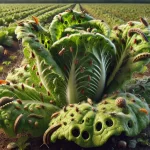The stem borer represents a severe threat to a wide variety of crops, from fruit trees to vegetables and ornamental plants. Its ability to dig tunnels in stems, fruits, and roots causes structural damage that affects crop yield and quality. This article focuses on the most effective methods for controlling the stem borer, including chemical, biological, and cultural options, with the aim of providing applicable technical solutions for both agronomists and producers or gardeners interested in sustainable pest management.
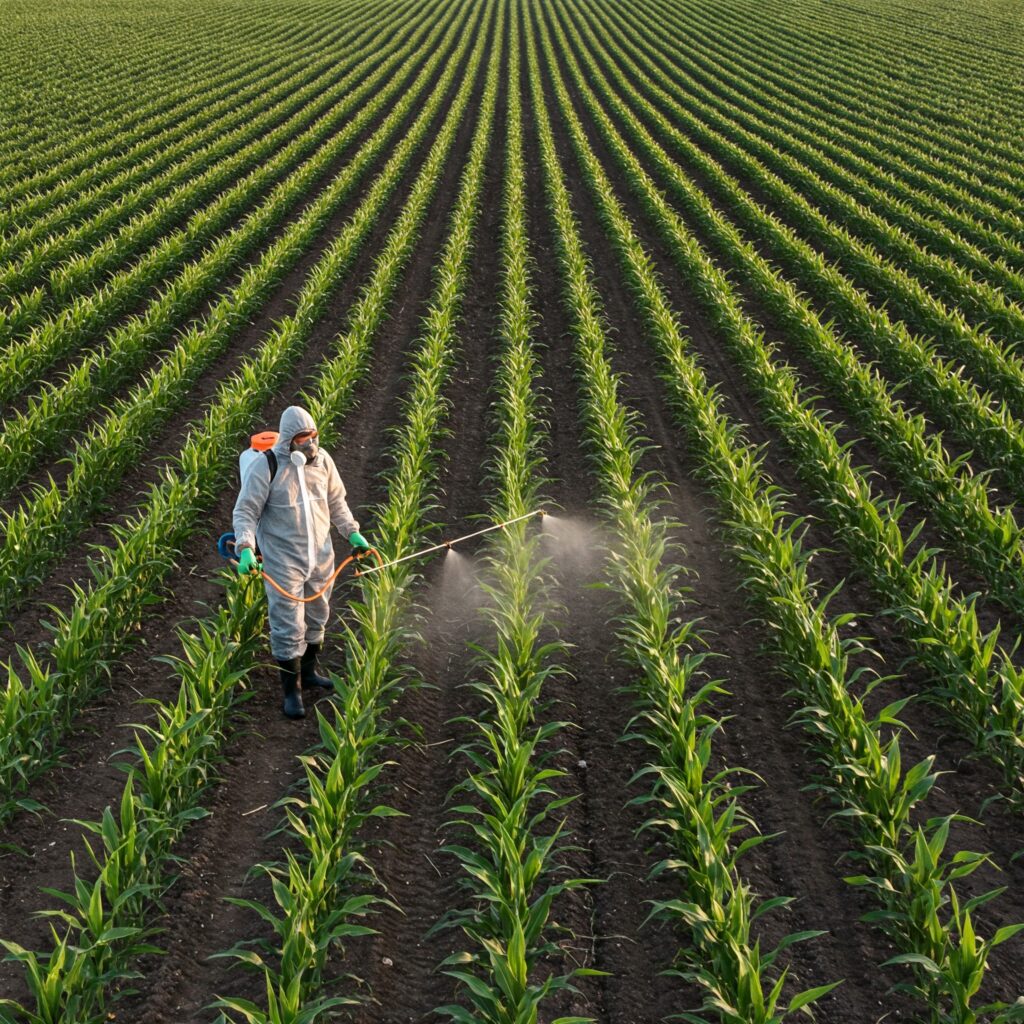
Principles of Integrated Pest Management (IPM)
Stem borer control should be part of an Integrated Pest Management (IPM) program, which combines different strategies to reduce the insect population without causing damage to the agricultural ecosystem.
Key elements of IPM:
- Constant monitoring of the population.
- Action thresholds defined to decide when to intervene.
- Rational use of insecticides.
- Promotion of natural enemies.
- Preventive cultural practices.
Stem borer control methods
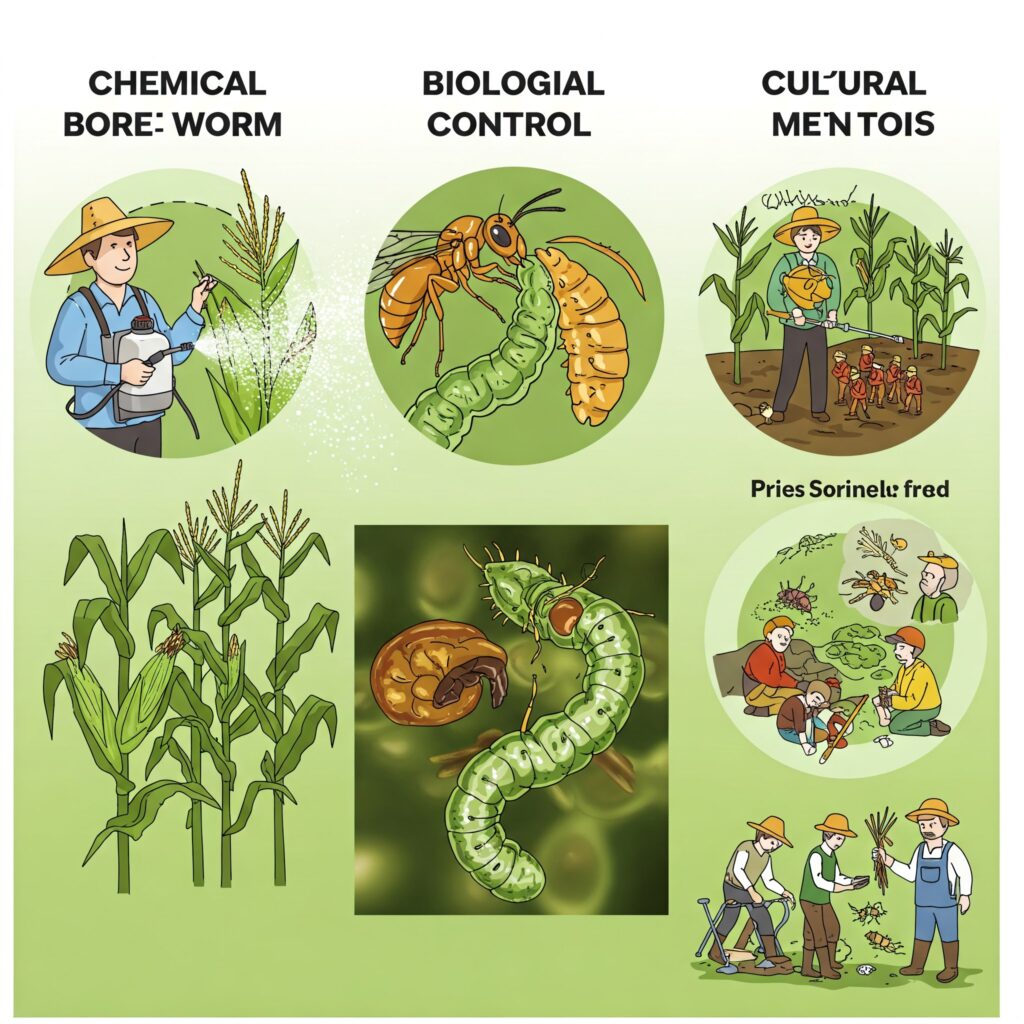
1. Chemical control
- Systemic insecticides: are absorbed by the plant and affect the larva when it feeds on the internal tissue. Ex.: Thiamethoxam, Imidacloprid.
- Contact insecticides: useful against adults in the flight phase. Ex.: Lambdacyhalothrin, Cypermethrin.
- Directed applications: by injection into the stem, brushing or localized spraying to avoid affecting beneficial insects.
Recommendations:
- Rotate active ingredients to avoid resistance.
- Apply in hours of low solar radiation.
- Follow label instructions to avoid residues.
2. Biological control
- Trichogramma spp.: microhymenopteran parasitoid of borer eggs.
- Beauveria bassiana and Metarhizium anisopliae: entomopathogenic fungi that infect larvae and pupae.
- Entomopathogenic nematodes: such as Steinernema carpocapsae, effective against larvae in the soil or inside the stem.
Advantages:
- Safe for humans, animals and the environment.
- They can be applied with conventional equipment.
- Compatible with other IPM methods.
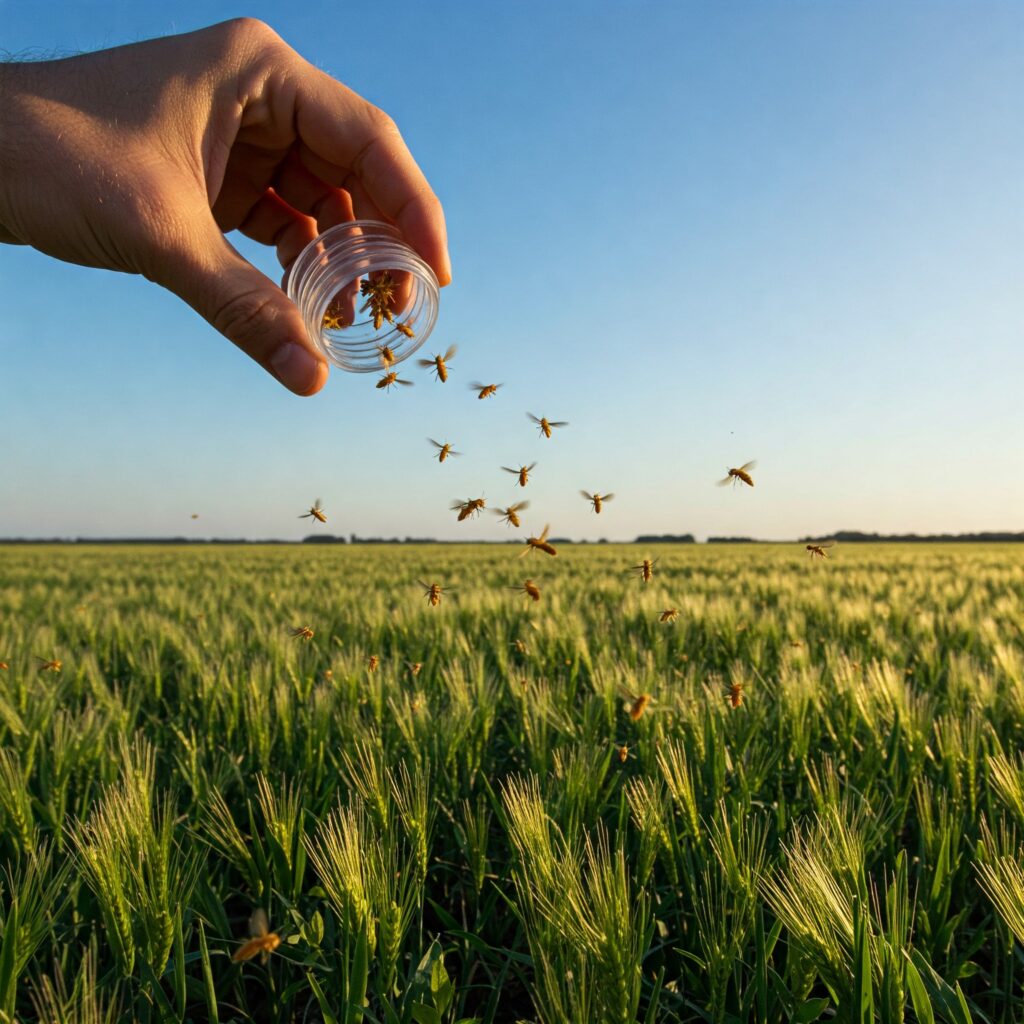
3. Cultural control
- Sanitary pruning: elimination of infested parts to stop the spread.
- Removal of fallen or damaged fruits.
- Use of resistant or tolerant varieties when available.
- Deep tillage to expose pupae in the soil to predators or adverse conditions.
- Crop rotation to avoid continuous reproductive cycles.
4. Use of traps
- Sex pheromones: specific to attract adults.
- Light traps: effective on adults with nocturnal habits.
- Mechanical traps: such as sticky tubes or baits with attractants.
It is recommended to install traps at the beginning of the season and follow up weekly to adjust control measures.

Evaluation of control effectiveness
- Inspection of stems and fruits every 7 days.
- Comparison of damage levels before and after treatment.
- Photographic record of symptoms.
- Quantification of adults captured in traps.
Final recommendations for successful control
- Integrate at least two control methods simultaneously.
- Train personnel in symptom identification and tool use.
- Avoid scheduled applications and prefer decisions based on monitoring.
- Document each intervention to adjust future strategies.
 AgronoBlog – Agriculture Blog
AgronoBlog – Agriculture Blog 